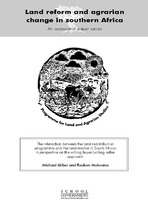| dc.description.abstract | The debate rages on, in South Africa and elsewhere, about the desirability and efficacy of the willing-buyer/willing-seller approach to land redistribution. In South Africa, the willing-buyer/willing-seller approach is frequently blamed for the fact that the government’s redistribution programme has thus far fallen well short of expectations. To what extent is this judgement justified? Moreover, if the willing-buyer/willing-seller approach has indeed contributed to the unimpressive rate of delivery of the land redistribution programme, is this on account of certain aspects of the approach i.e. which could be selectively remedied ñ or is the willing-buyer/willing-seller approach fundamentally unsuited to the task allocated to it? The objective of this paper is to provide a partial answer to these questions. In short, the paper argues, on the one hand, that the willing-buyer/willing-seller approach is not as fundamentally ill-suited a mechanism to effect state-supported land redistribution as is commonly claimed. On the other hand, the paper suggests that the unimaginative manner in which the willing-buyer/willing-seller approach is being applied is definitely contributing to the slow pace of redistribution, and reflects a lack of vision and ambition among policy-makers. The development of the argument involves examining the interaction between the land market and the redistribution programme from different angles. In one angle, we seek simply to gauge the magnitude of the land redistribution programme relative to the level of normal activity in the rural property market (Section 4). A second angle involves an econometric exercise to determine whether or not the redistribution programme affects market prices of rural land (Section 5). And from a third angle, we review the experiences and perceptions of estate agents and staff of the Department of Land Affairs, so as to shed light on some of the specific allegations as to how the land market may be inhibiting redistribution (Section 6). We begin, however, with two sections by way of background, the one offering a synopsis of the debate around the willing-buyer/willing-seller approach (Section 2), and the other reporting recent trends in the land market (Section 3). We conclude with an examination of a number of specific policy issues, some of which suggest promising avenues for policy development and some of which do not (Section 7). | en_US |

